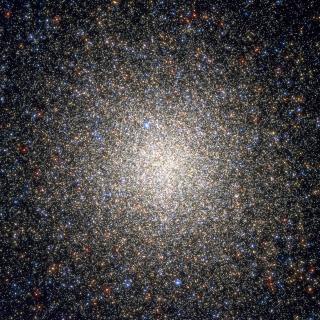Bibcode
Lagioia, E. P.; Milone, A. P.; Marino, A. F.; Cassisi, S.; Aparicio, A. J.; Piotto, G.; Anderson, J.; Barbuy, B.; Bedin, L. R.; Bellini, A.; Brown, T.; D'Antona, F.; Nardiello, D.; Ortolani, S.; Pietrinferni, A.; Renzini, A.; Salaris, M.; Sarajedini, A.; van der Marel, R.; Vesperini, E.
Bibliographical reference
Monthly Notices of the Royal Astronomical Society, Volume 475, Issue 3, p.4088-4103
Advertised on:
4
2018
Citations
46
Refereed citations
42
Description
The Hubble Space Telescope UV Legacy Survey of Galactic Globular
Clusters is providing a major breakthrough in our knowledge of globular
clusters (GCs) and their stellar populations. Among the main results, we
discovered that all the studied GCs host two main discrete groups
consisting of first generation (1G) and second generation (2G) stars. We
exploit the multiwavelength photometry from this project to investigate,
for the first time, the Red Giant Branch Bump (RGBB) of the two
generations in a large sample of GCs. We identified, with high
statistical significance, the RGBB of 1G and 2G stars in 26 GCs and
found that their magnitude separation as a function of the filter
wavelength follows comparable trends. The comparison of observations to
synthetic spectra reveals that the RGBB luminosity depends on the
stellar chemical composition and that the 2G RGBB is consistent with
stars enhanced in He and N and depleted in C and O with respect to 1G
stars. For metal-poor GCs the 1G and 2G RGBB relative luminosity in
optical bands mostly depends on helium content, Y. We used the RGBB
observations in F606W and F814W bands to infer the relative helium
abundance of 1G and 2G stars in 18 GCs, finding an average helium
enhancement ΔY = 0.011 ± 0.002 of 2G stars with respect to
1G stars. This is the first determination of the average difference in
helium abundance of multiple populations in a large number of clusters
and provides a lower limit to the maximum internal variation of helium
in GCs.
Related projects

Milky Way and Nearby Galaxies
The general aim of the project is to research the structure, evolutionary history and formation of galaxies through the study of their resolved stellar populations, both from photometry and spectroscopy. The group research concentrates in the most nearby objects, namely the Local Group galaxies including the Milky Way and M33 under the hypothesis
Martín
López Corredoira